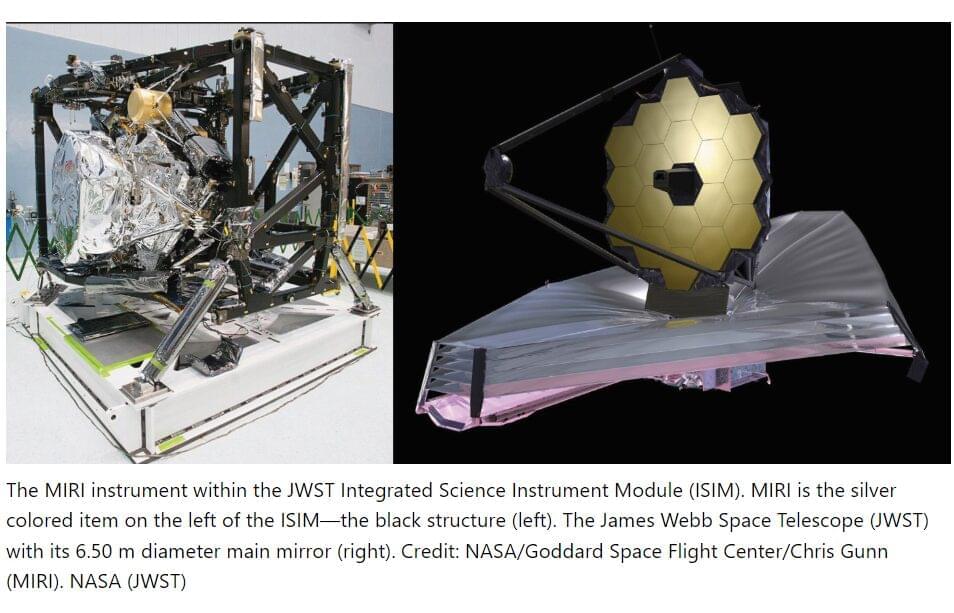Using the MIRI instrument onboard the James Webb Space Telescope, an international team of scientists made the first-ever detection of a mid-IR flare from Sagittarius A*, the supermassive blackhole at the heart of the Milky Way. In simultaneous radio observations, the team found a radio counterpart of the flare lagging behind in time. The paper is published on the arXiv preprint server.
Scientists have been actively observing Sagittarius A* (Sgr A)—a supermassive black hole roughly 4 million times the mass of the sun— since the early 1990s. Sgr A regularly exhibits flares that can be observed in multiple wavelengths, allowing scientists to see different views of the same flare and better understand how it emits light and how the emission is generated. Despite a long history of successful observations, and even imaging of the cosmic beast by the Event Horizon Telescope in 2022, one crucial piece of the puzzle— mid-infrared observations (Mid-IR)—was missing until now.
Infrared (IR) light is a type of electromagnetic radiation that has longer wavelengths than visible light, but shorter wavelengths than radio light. Mid-IR sits in the middle of the infrared spectrum, and allows astronomers to observe objects, like flares, that are often difficult to observe in other wavelengths due to impenetrable dust. Until the recent study, no team had yet successfully detected Sgr A*’s variability in the mid-IR, leaving a gap in scientists’ understanding of what causes flares, and questions about whether theoretical models are complete.
